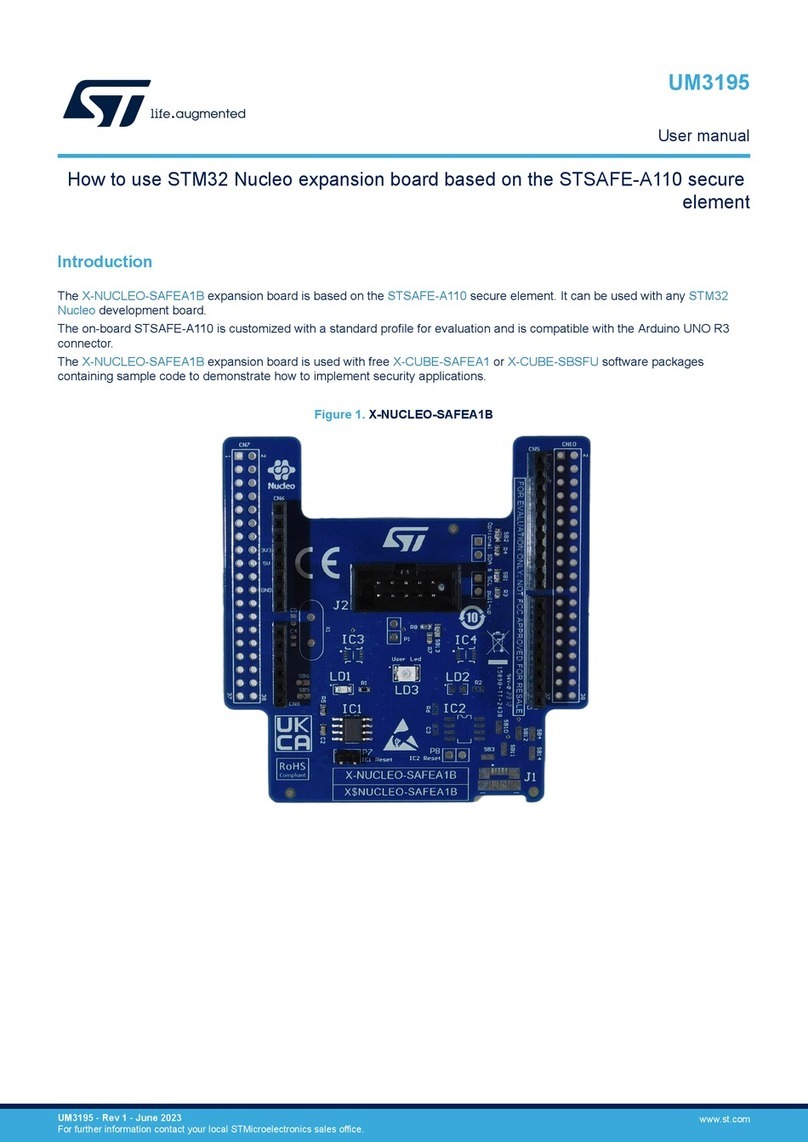NXP Semiconductors S32G-VNP-EVB3 User manual
Other NXP Semiconductors Computer Hardware manuals
NXP Semiconductors
NXP Semiconductors AN12398 User manual
NXP Semiconductors
NXP Semiconductors 8MNANOD3L-EVK User manual
NXP Semiconductors
NXP Semiconductors QorIQ LX2160A User manual
NXP Semiconductors
NXP Semiconductors winbond MCX-N9 BRK Series User manual
NXP Semiconductors
NXP Semiconductors OM15080-QN9090 User manual
NXP Semiconductors
NXP Semiconductors UM10569 User manual
NXP Semiconductors
NXP Semiconductors K32W061 User manual
NXP Semiconductors
NXP Semiconductors FRDM665SPIEVB User manual
NXP Semiconductors
NXP Semiconductors freescale MPC837xE-RDS User manual
NXP Semiconductors
NXP Semiconductors i.MX 8QuadXPlus User manual

NXP Semiconductors
NXP Semiconductors MCXN 4 Series Guide
NXP Semiconductors
NXP Semiconductors Android i.MX 8M Mini User manual
NXP Semiconductors
NXP Semiconductors QorIQ T2080 User manual
NXP Semiconductors
NXP Semiconductors Freescale TWR-S12G240 User manual
NXP Semiconductors
NXP Semiconductors SABRE i.MX 6 Series Assembly instructions
NXP Semiconductors
NXP Semiconductors QN908 series User manual
NXP Semiconductors
NXP Semiconductors MCUXpresso IDE MQX RTOS Guide
NXP Semiconductors
NXP Semiconductors freescale MC92604 User manual
NXP Semiconductors
NXP Semiconductors i.MX RT1170 Installation and operating instructions

NXP Semiconductors
NXP Semiconductors OM11058 User manual
Popular Computer Hardware manuals by other brands

EMC2
EMC2 VNX Series Hardware Information Guide

Panasonic
Panasonic DV0PM20105 Operation manual

Mitsubishi Electric
Mitsubishi Electric Q81BD-J61BT11 user manual

Gigabyte
Gigabyte B660M DS3H AX DDR4 user manual

Raidon
Raidon iT2300 Quick installation guide

National Instruments
National Instruments PXI-8186 user manual





















